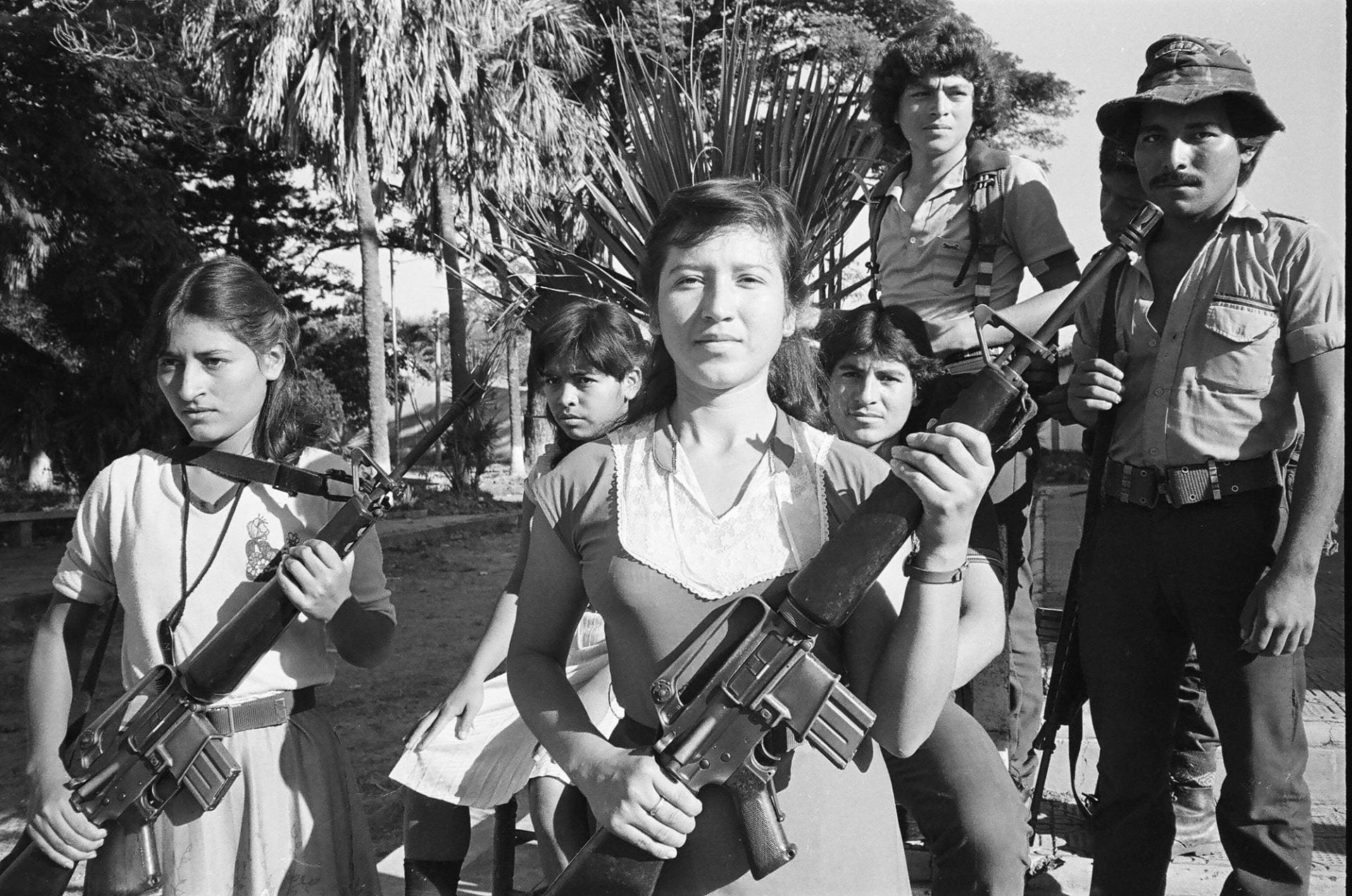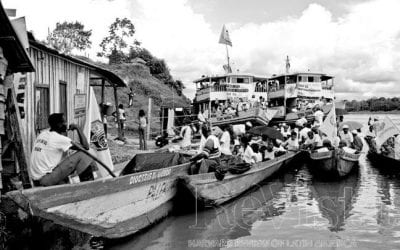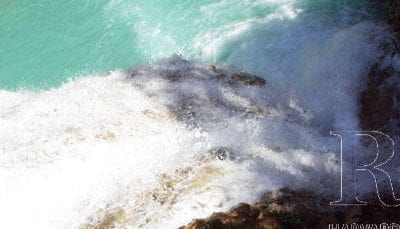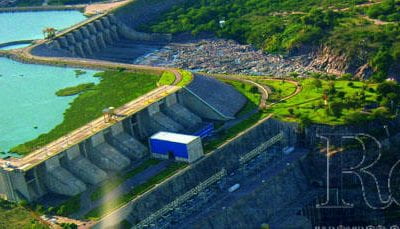For the last few years I’ve been taking students from the University of Miami to the Galápagos Islands off the coast of Ecuador. We study the environment and the culture. We record the squeaky, hissy conversations of giant land tortoises and the volcanic-black marine iguanas that are found nowhere else. We swim with sea lions and penguins.
One thing we do not do is drink the water.
The people on the island of Isabela, which serves as our headquarters, live in a kind of environmental paradise. Blue-footed boobies and pink flamingos soar over the main village of Puerto Villamil, and little stubby, brown finches dart through the mangroves and shrubs.
But all too often the people in Puerto Villamil and the hamlets in the highlands wake up with a serious stomach ache. It is because of the water. As far as I know, there’s been no conclusive analysis of precisely what parasites, bacteria and viruses are in the water. It runs nicely through pipes into many homes and businesses. But it needs to be boiled to be safe to drink.
The unsafe drinking water there is part of a global problem. Throughout Latin America and the world, nearly 800 million people live without safe, clean drinking water, according to United Nations agencies. More than three times more people—2.5 billion—manage to survive without a decent toilet, day in and day out. People suffering from water-borne diseases take up about half of all the hospital beds in the world. And each year the diseases carried in water kill nearly two million people, mostly children under five years of age.
Economies suffer. Women and girls spend hours each day lugging water from streams and lakes. People miss days at work. Children don’t go to school.
In Latin America and elsewhere in the world, climate change and increasing population are going to make access to clean drinking water even more difficult. More people will have to share the earth’s finite water. The higher temperatures of climate change are expected to bring longer dry stretches and more evaporation, alternating with heavy rains and floods. Most places have not developed ways to capture and store the rains and the flooding churns all sorts of harmful things into drinking water.
To deal with climate change, water experts say everyone needs to use less water, especially the farmers in Latin America and elsewhere. Experts estimate that at least 70 percent of the world’s water goes to irrigate farm crops and nourish livestock. Much of that water could be saved through the use of drip irrigation, which takes water directly to the roots of plants. But drip irrigation is expensive, and farmers would probably need subsidies to convert from their widespread use of sprinklers. Indeed, much of Latin America’s water is consumed by soy farmers and cattle ranchers in Brazil.
The situation in Latin America and the Caribbean is not as bad as in Africa and India. But the United Nations reports that about 36 million people—more than all the people in Mexico City, Bogotá, Lima and Buenos Aires combined—are living without clean, safe drinking water.
It’s hard to say when things will get better for these people. The water problem in Latin America, as in Africa and India, is mostly a matter of poverty. It is not, as one United Nations agency pointed out a few years ago, that there is not enough water to go around. That is especially true in Latin America, which has some of the most bountiful water resources in the world.
Manuel Rodriguez Becerra served as Colombia’s first Minister of the Environment years ago and has worked on environmental projects for the United Nations. One of the first things he mentioned in an interview with me was the inequality in Latin America: “it is the poorest of the poor who don’t have access to clean drinking water,” he said by telephone from Bogotá.
Around the world, a lack of sanitary facilities—toilets—is a big factor in theunhealthiness of the drinking water. Some people simply wade into rivers and streams where others get their drinking water. Cattle defecate in the same water. In Latin America, as in other parts of the developing world, many rivers are choked with chemical and industrial waste. The Rio de la Plata, which sweeps past Buenos Aires, is one of the most polluted.
The poor often lack the ability to bring pressure on political leaders. They are invisible from the steel and glass skyscrapers of São Paulo and Buenos Aires. And even when governments and humanitarian agencies try to help get water to the poor, they struggle with logistics and coordination and with providing solutions that fit in with the lives of the people they are trying to help.
Lots of people are working on the water problem in Latin America from many perspectives, as you will see in this issue of ReVista. But often they are working at cross-purposes. Some governments and humanitarian organizations dig wells. Some distribute purification tablets. Some install pumps. Still others believe the answer is to build big water treatment plants and lay down miles of water pipes. There are many kinds of projects, all useful. But for one reason or another they often don’t fit together. You get a little benefit for a while. Then the project falls apart. The left hand doesn’t know what the right hand is doing.
“The problem,” said Ban Ki-moon, the secretary general of the United Nations, in a speech at the World Economic Forum in Davos, Switzerland, not long ago, “is that we have no coordinated global management authority in the UN system or the world at large.” Water, climate change and the global food problem share a common burden, he said: “there is no overall responsibility, accountability or vision.”
The problem in Latin America and the rest of the world is worse than the United Nations data suggests. By the United Nations standards, when people have water piped into their homes they are no longer regarded as lacking access to clean, safe drinking water. But in many parts of Latin America and the world, tap water is not safe to drink. No one has counted how many tens of millions of people are in this situation.
But the Centers for Disease Control and Prevention in Atlanta says that people in the Galápagos and the rest of Latin America and, indeed, most of the developing world should not trust the tap water. It can make you just as sick as water from a polluted river.
Charles Fishman, an expert on water and the author of The Big Thirst, a book on drinking-water problems around the world, moved to Mexico City from New York. He and many of his neighbors in the upper-middle-class Condesa neighborhood of Mexico City have running water. But, he said in an interview, “no one drinks the tap water, even the people in the barrios, the slums.”
Fishman said that in Mexico City, the pipes that carry drinking water and sewage were laid long ago underground in a single trench, side by side. The pipes have become corroded and sewage and drinking water intermingle. “The water in Mexico City comes out of the treatment plants clean,” he said, “but it becomes undrinkable.” The same thing happens in Africa and other parts of the world. The water is clean when it leaves the treatment plant in Kampala, the capital of Uganda, officials say. But a short distance from the plant, residents say, the water turns foul and must be boiled. Some of the poorest people in Africa and in Latin America survive on a few dollars a day. They often choose not to spend money on fuel to boil drinking water. Some people develop immunities to the things in the water. But many are routinely sick.
In many places in Latin America, running water is available for only a few hours a day. That is almost a guarantee for health problems, said Alain R. Locussol, a water expert in Washington who worked for the World Bank for 25 years. “Each time the pipes go empty,” he said in an interview, “a vacuum is created. When the water starts up, it sucks in pollution.”
The medical costs of unclean drinking water run into the billions for governments around the world. That would seem to be an incentive to clean up the water. But getting local and national governments to spend money on drinking water and sanitation has not been easy. Sometimes there just isn’t any money, no functioning water system and no one to manage it. But equally important, water experts say, is that some political leaders apparently see more benefit in cutting ribbons at opening ceremonies for new hospitals than in dealing with the less glamorous business of removing bacteria and parasites from drinking water. Sometimes it takes a lot of money and time before any impact is seen—not always good on a short election cycle of four or six years. Sometimes, in order to make improvements, the government needs to raise the cost of water to homes and businesses. That is never welcome. Political leaders know it can cost them votes. So, often, they don’t increase prices and don’t expand service or fix broken pipes and pumps.
Selling high-priced water is a business for many people in the developing world. In some places, hundreds of tanker trucks deliver drinking water. The owners have political clout and don’t want the government to come up with a less expensive way for people to get drinking water.
Another complicating factor is that people sometimes don’t see anything wrong with their water. They don’t demand improvement. The water often sparkles in the sunlight. Instead of blaming the water for their chronic gastrointestinal problems and dehydration, they tell visitors, as one man in a slum in East Africa told me, “That’s just the way it is in this place.” It’s the same in Managua and Mexico.
In the 1990s, many governments in Latin America and other parts of the world thought they might have a solution for the drinking water problem in the cities. The pipes and pumps at the municipal water works needed replacing, so the World Bank and many governments agreed to sell or lease the water works to private companies. The private companies would run the water systems efficiently and people would get clean drinking water. But, it turned out, the private companies raised rates sharply and many poor people could not afford the water.
The issue came to a head in Cochabamba, the third largest city in Bolivia, about 350 miles east of the capital city of La Paz. Protesters took to the streets. Bolivia withdrew its contract. Buenos Aires also threw out the private company.
In Colombia these days, Becerra, the former minister of the environment, said that private companies are doing a good job of running the drinking water systems in the coastal cities of Barranquilla and Cartagena, and that public companies are efficiently supplying drinking water in Bogotá and Medellín. “Many people below the poverty line in Bogota get clean drinking water,” Becerra said.
In Medellín, Javier Marquez, who has campaigned against private operation of public utilities, said in an email that the Bogotá and Medellín companies give poor people a basic supply of drinking water for free. But he said both companies operate a bit like private companies. When people who are required to pay for their water do not pay, the company cuts them off. He said that 50,000 low-income people in Medellín have been disconnected from the municipal water system.
The World Bank often made contracting with private water companies a condition for receiving loans. Locussol, the former World Bank water expert in Washington, told me the trend is for public water companies to contract out some of the work, but to retain control on policy and pricing.
Latin America has made considerable progress on drinking water. But it has taken years to achieve. Twenty years ago, more than 65 million people in the region were living without clean drinking water—almost double the official United Nations number these days.
But there is still a lot to do. Many countries are struggling financially. Ecuador, the sovereign authority in the Galápagos, is among them. The drinking water in Puerto Villamil has been unfit to drink for years. What money there is, it seems, is being spent for medical treatment.
One of the most attractive places in downtown Puerto Villamil is a modest, white-washed masonry building overlooking the broad, sandy beach. It extends half a block to the main street, a wide avenue of hard-packed sand and volcanic gravel, illuminated in the evenings by street lamps fastened to weathered driftwood poles. It is the town clinic.
It has a small staff of doctors sent out from mainland Ecuador for obligatory government service. They treat some cuts and bruises and work with commercial divers who get into trouble staying too long in deep water, collecting sea cucumbers for Asian markets. But much of the work, the doctors say, is treating sicknesses that come from drinking the water.
Joseph B. Treaster is a former reporter and foreign correspondent for The New York Times. He holds the Knight Chair in Cross-Cultural Communication at the University of Miami. He edits The Miami Planet, http://www.themiamiplanet.org/, and teaches writing and global environmental issues.
Related Articles
Al Son Del Río
English + Español
Wending our way down the Atrato River in Colombia’s Chocó region, we finally reach the town of Puné. It is a fickle June afternoon, one of those humid tropical afternoons when the sun and water alternate in sudden torrential rains. “The river is everything to us,” …
Water: The Last Word
A man was shot and killed in a dispute in June 2010 over a water connection in San Juan Cancuc, Chiapas, Mexico. A Zapatista settlement coexists, if uneasily, on the edge of the municipality. Residents of the nearby community of El Pozo had threatened to shut off Zapatistas water connection. A confrontation ensued, shots followed, with one fatality and nine wounded. …
Water, The Energy Sector and Climate Change in Brazil
As a Brazilian, I am very proud of the rich natural resources of my country, in particular water resources. As an engineer who had worked in the Brazilian energy sector for the last fourteen years, I am very proud of the infrastructure built over the last seventy years that has allowed the use of water resources responsibly and intelligently. But as a hydrologist and doctoral student in water resources,…






